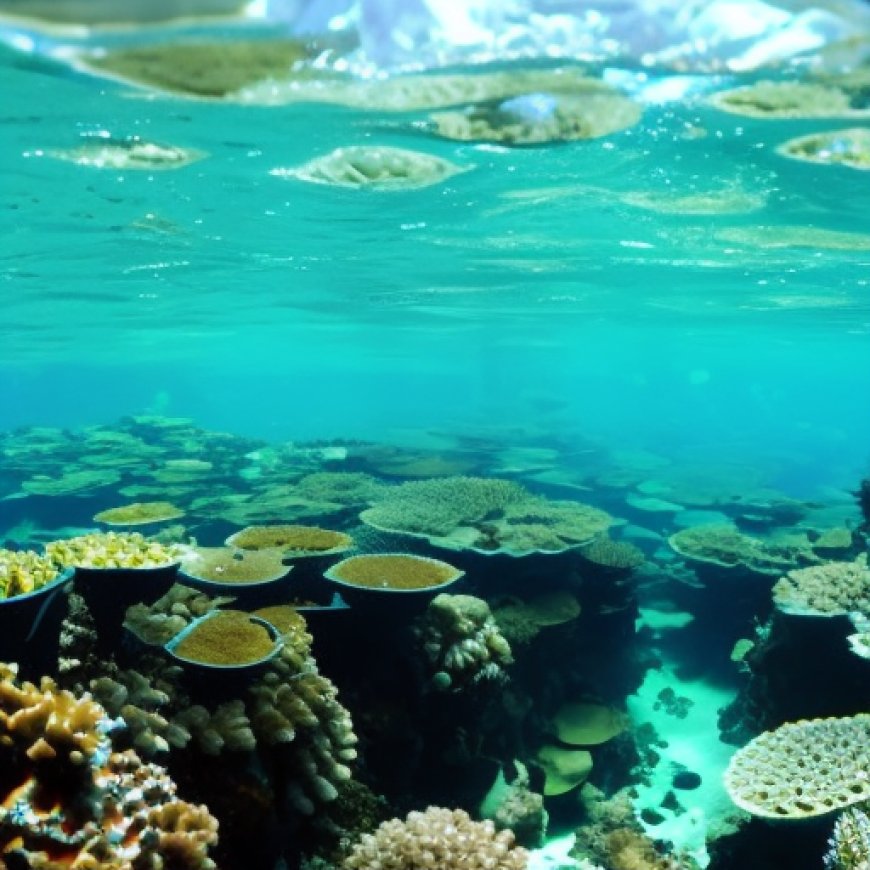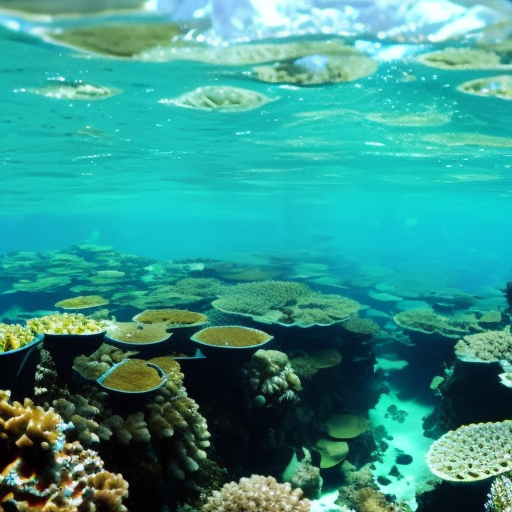Deep parts of Great Barrier Reef ‘insulated’ from global warming – for now
Deep parts of Great Barrier Reef 'insulated' from global warming – for now EurekAlert


Some deeper areas of the Great Barrier Reef are insulated from harmful heatwaves – but that protection will be lost if global warming continues, according to new research.
image:
Coral reefs are fragile ecosystems and become increasingly dominated by lettuce-like and encrusting morphologies at mesophotic depths
Credit: Prof Peter Mumby
Climate change projections for coral reefs are usually based on sea surface temperatures, but this overlooks the fact that deeper water does not necessarily experience the same warming as that at the surface.
The Study
The new study, led by the universities of Exeter and Queensland, examined how changing temperatures will affect mesophotic corals (depth 30-50 metres).
It found that separation between warm buoyant surface water and cooler deeper water can insulate reefs from surface heatwaves, but this protection will be lost if global warming exceeds 3°C above pre-industrial levels.
The researchers say similar patterns could occur on other reefs worldwide, but local conditions affecting how the water moves and mixes will mean the degree to which deeper water coral refuges exist and remain insulated from surface heatwaves will vary.
Sustainable Development Goals (SDGs)
- Goal 13: Climate Action
- Goal 14: Life Below Water
“Coral reefs are the canary in the coalmine, warning us of the many species and ecosystems affected by climate change,” said Dr Jennifer McWhorter, who led the research during a QUEX PhD studentship at the universities of Exeter and Queensland.
“Coral bleaching is a dramatic sign of the impact humans are having on the planet.
“Our study offers both hope and a warning – hope that some reefs are resilient to current levels of climate change, and a warning that this resilience has its limits.”
The study finds that 3°C of global warming would push mesophotic temperatures in the Great Barrier Reef past 30°C – a recognised threshold for coral mortality.
This does not necessarily mean that all coral would die, but it would place the reef in a state of stress that would increase mortality and possibly cause it to collapse.
Dr McWhorter, now at NOAA’s Atlantic Oceanographic & Meteorological Laboratory, said: “Some shallow-water species are not found in deeper areas – so mesophotic reefs can’t provide refuges for them as shallow reefs are degraded.
“And, as our study shows, mesophotic corals are themselves threatened if global warming continues.”
Projections
To calculate their projections of mesophotic reefs warming, the research team considered factors such as wind and tidal mixing of water, and local complexities.
They estimate that, by 2050-60, bottom temperatures on the Great Barrier Reef (30-50 metres) will increase by 0.5-1°C under lower projected greenhouse gas emissions, and 1.2-1.7°C under higher emissions.
Dr Paul Halloran, from Exeter’s Global Systems Institute, said: “To protect coral reefs, we need to understand them better.
“Reefs face multiple threats – not just climate change. By targeting management of these threats on reefs that have the best chance of escaping the worst impacts of climate change, hopefully some healthy reefs can be maintained.
Professor Peter Mumby, from the University of Queensland, said: “There is so much to learn about deeper, tropical coral reefs, especially as we cannot assume that their depth provides a persistent refuge from the consequences of rising global carbon emissions.”
Conclusion
The study highlights the importance of addressing climate change and its impact on coral reefs. It emphasizes the need to protect and preserve coral reefs as they play a crucial role in supporting marine biodiversity and ecosystems.
Journal
Proceedings of the National Academy of Sciences
Article Title
Climate change impacts on mesophotic regions of the Great Barrier Reef.
Article Publication Date
8-Apr-2024
Disclaimer: AAAS and EurekAlert! are not responsible for the accuracy of news releases posted to EurekAlert! by contributing institutions or for the use of any information through the EurekAlert system.
SDGs, Targets, and Indicators Analysis
1. Which SDGs are addressed or connected to the issues highlighted in the article?
- SDG 13: Climate Action
- SDG 14: Life Below Water
The article discusses the impact of global warming on coral reefs, specifically the Great Barrier Reef. This aligns with SDG 13, which focuses on taking urgent action to combat climate change and its impacts. Additionally, the article mentions the canary-in-the-coalmine role of coral reefs, highlighting their importance as indicators of climate change and ecosystem health. This connects to SDG 14, which aims to conserve and sustainably use the oceans, seas, and marine resources.
2. What specific targets under those SDGs can be identified based on the article’s content?
- SDG 13.2: Integrate climate change measures into national policies, strategies, and planning.
- SDG 14.2: Sustainably manage and protect marine and coastal ecosystems to avoid significant adverse impacts.
The article emphasizes the need to incorporate climate change measures into policies and planning to protect coral reefs from the impacts of global warming. This aligns with SDG 13.2. Additionally, the article highlights the importance of sustainably managing and protecting marine ecosystems, such as coral reefs, to prevent significant adverse impacts. This relates to SDG 14.2.
3. Are there any indicators mentioned or implied in the article that can be used to measure progress towards the identified targets?
- Indicator for SDG 13.2: Number of countries with integrated policies, strategies, and plans for climate change mitigation, adaptation, impact reduction, and early warning.
- Indicator for SDG 14.2: Proportion of coastal and marine areas protected to conserve biodiversity and ecosystems services.
The article does not explicitly mention specific indicators. However, to measure progress towards SDG 13.2, the number of countries with integrated policies, strategies, and plans for climate change mitigation and adaptation can be used as an indicator. For SDG 14.2, the proportion of protected coastal and marine areas can be used as an indicator to assess the conservation of biodiversity and ecosystem services.
4. Table: SDGs, Targets, and Indicators
| SDGs | Targets | Indicators |
|---|---|---|
| SDG 13: Climate Action | 13.2: Integrate climate change measures into national policies, strategies, and planning. | Number of countries with integrated policies, strategies, and plans for climate change mitigation, adaptation, impact reduction, and early warning. |
| SDG 14: Life Below Water | 14.2: Sustainably manage and protect marine and coastal ecosystems to avoid significant adverse impacts. | Proportion of coastal and marine areas protected to conserve biodiversity and ecosystems services. |
Behold! This splendid article springs forth from the wellspring of knowledge, shaped by a wondrous proprietary AI technology that delved into a vast ocean of data, illuminating the path towards the Sustainable Development Goals. Remember that all rights are reserved by SDG Investors LLC, empowering us to champion progress together.
Source: eurekalert.org

Join us, as fellow seekers of change, on a transformative journey at https://sdgtalks.ai/welcome, where you can become a member and actively contribute to shaping a brighter future.







